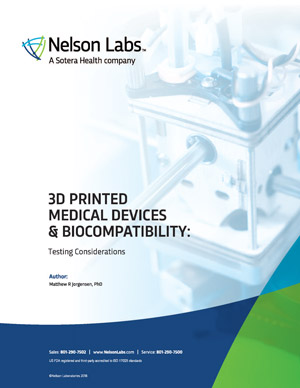The use of three-dimensional (3D) printing techniques to address challenging fabrication problems has become mainstream over the past decade. While this rich resource has extended fabrication of personalized medical devices to the limit of our imagination, the myriad materials and morphologies available present a unique concern from a toxicological perspective. A range of standalone 3D printers are commercially available with compatible materials ranging from plastics to oxides and metals. Raw materials used in the fabrication process often have highly customized properties, achieved through the use of proprietary additives and specific microscale morphologies which can affect the overall biocompatibility of the finished device. Therefore, 3D printed medical devices require versatile approaches to the assessment of their biocompatibility that consider several factors which will be addressed in this document:
- Possible additives to raw materials which enhance workability
- Details of the material curing process
- Post-printing finishing and rinsing processes
- Time allowed for aeration between device manufacture and use


